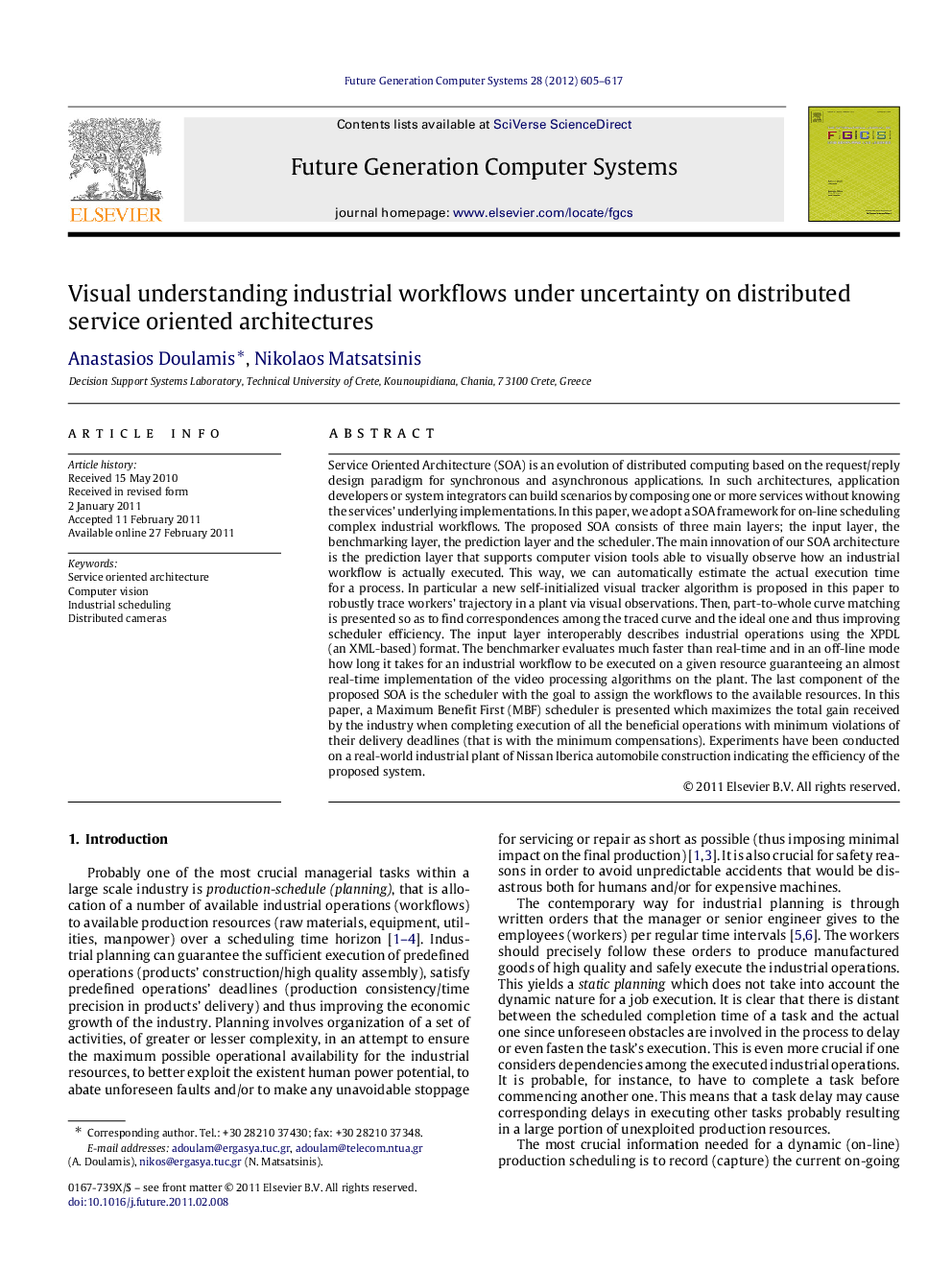| کد مقاله | کد نشریه | سال انتشار | مقاله انگلیسی | نسخه تمام متن |
|---|---|---|---|---|
| 426058 | 685988 | 2012 | 13 صفحه PDF | دانلود رایگان |

Service Oriented Architecture (SOA) is an evolution of distributed computing based on the request/reply design paradigm for synchronous and asynchronous applications. In such architectures, application developers or system integrators can build scenarios by composing one or more services without knowing the services’ underlying implementations. In this paper, we adopt a SOA framework for on-line scheduling complex industrial workflows. The proposed SOA consists of three main layers; the input layer, the benchmarking layer, the prediction layer and the scheduler. The main innovation of our SOA architecture is the prediction layer that supports computer vision tools able to visually observe how an industrial workflow is actually executed. This way, we can automatically estimate the actual execution time for a process. In particular a new self-initialized visual tracker algorithm is proposed in this paper to robustly trace workers’ trajectory in a plant via visual observations. Then, part-to-whole curve matching is presented so as to find correspondences among the traced curve and the ideal one and thus improving scheduler efficiency. The input layer interoperably describes industrial operations using the XPDL (an XML-based) format. The benchmarker evaluates much faster than real-time and in an off-line mode how long it takes for an industrial workflow to be executed on a given resource guaranteeing an almost real-time implementation of the video processing algorithms on the plant. The last component of the proposed SOA is the scheduler with the goal to assign the workflows to the available resources. In this paper, a Maximum Benefit First (MBF) scheduler is presented which maximizes the total gain received by the industry when completing execution of all the beneficial operations with minimum violations of their delivery deadlines (that is with the minimum compensations). Experiments have been conducted on a real-world industrial plant of Nissan Iberica automobile construction indicating the efficiency of the proposed system.
► Service oriented architectures for real-world industrial environments.
► Production scheduling using service oriented architectures.
► Computer vision in improving production scheduling.
► Pattern analysis techniques combined for partial-to-whole curve matching.
Journal: Future Generation Computer Systems - Volume 28, Issue 3, March 2012, Pages 605–617